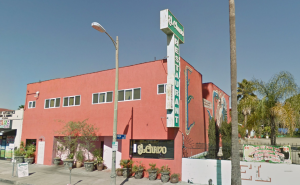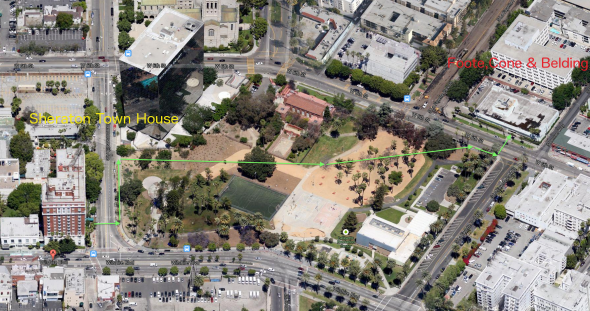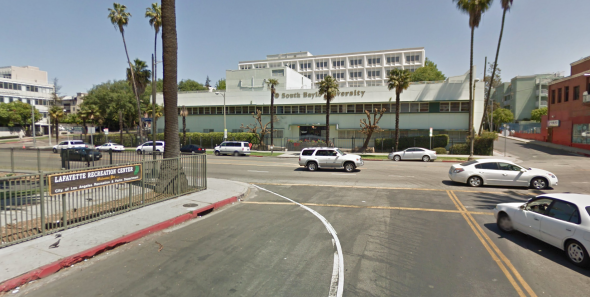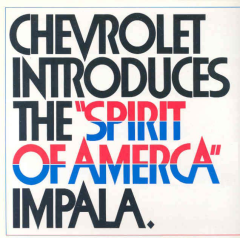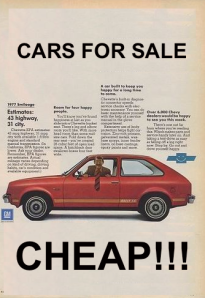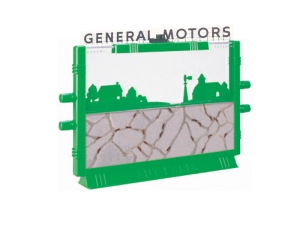Mikiro “Miki” Sato. He was the “factory guy” working in the Compton offices of Mazda Motors of America – Central. His employer was Toyo Kogyo, and he held the title of “Assistant to the President.” The president in this case was Toru “Tim” Ogawa who ran MMA- C. The Assistant to the President job is very different from our notion. He doesn’t make appointments for the president, make his lunch dates, does not pick him up at the airport, or buy his gifts for him. In short, he is not a bag smasher. The Assistant to the President is a very key position. He is the eyes and ears to management. His job is to discretely make sure management initiatives are implemented. He made sure that everything was running smoothly here, and each night sent a parcel to Hiroshima giving them updates. Something like a master sergeant. Miki and I became very close friends and he taught me more about the universality of the human race than anyone ever had.
Toyo Kogyo took up most of the shoreline on Hiroshima Bay. They were to the city as Ford was to Dearborn. Small boys grew up hoping to land a job with Toyo Kogyo. Particularly galling to Mazda was their position and awareness in the U.S. market. In Japan, and around the world, they were a major player. In the U.S., they trailed pipsqueaks like Datsun and Honda. About a week after I started, Tim Ogawa and the rest of Mazda executive management came to the agency for a meeting. Mazda’s American management was mostly made up of former Chrysler folks. As the meeting started, I  didn’t notice the look of apprehension on the faces of our people. Mr. Ogawa got right to the point. “There is a cancer destroying Mazda in this country. And, with any cancer, it must be cut out. He looked at his people, “It might be our management.” He looked at us, “It might be the ad agency.” He looked at the floor, “It might be our products. Whatever it is, we must find it and cut it out.” Hhmmmm. I wonder if we could get our house in Detroit back? Fortunately, we found out that the agency wasn’t the carcinogen.
didn’t notice the look of apprehension on the faces of our people. Mr. Ogawa got right to the point. “There is a cancer destroying Mazda in this country. And, with any cancer, it must be cut out. He looked at his people, “It might be our management.” He looked at us, “It might be the ad agency.” He looked at the floor, “It might be our products. Whatever it is, we must find it and cut it out.” Hhmmmm. I wonder if we could get our house in Detroit back? Fortunately, we found out that the agency wasn’t the carcinogen.
Miki Sato became one of my primary client contacts. We also became good friends. He told me that the Japanese Mazda executives were required to attend school on Saturdays to improve their English skills. A weekly assignment was to bring in a newspaper editorial and be prepared to discuss it. The rationale here was that editorials wouldn’t contain grammatical errors, but would still be written to be understood by the average American. Driven by his example, and by a desire to broaden my horizons, I enrolled in Japanese language and culture classes. I soon discovered how lucky English speakers are. We only have one alphabet, and that only has 26 letters. Japanese uses four major “alphabets.” There are kanji…over 2300 pictograms derived from Chinese. First graders have to memorize 80 characters. Miki told me that by the time he’d reached 6th grade, he had to know more than 900 of them. There are also the hiragana and katakana alphabets, developed to augment kanji and to accommodate Western terms, places, and phrases. Each of these has 48 characters. Then there is romaji…the Western alphabet used to write out words for Westerners. THANK YOU becomes 有り難う in kanji, ありがとうin hiragana, nothing in katakana, and arigato in romaji. My Japanese instructor also told me about “honorifics,” and when to use them in public, the voice to use to my children and wife, and the voice to use when addressing my parents. I also learned about the Japanese concepts of tatemae and honne. Tatemae means the public facade we present, what is normal, polite, and expected. Honne is the reality behind tatemae…true intention. They
Japanese language and culture classes. I soon discovered how lucky English speakers are. We only have one alphabet, and that only has 26 letters. Japanese uses four major “alphabets.” There are kanji…over 2300 pictograms derived from Chinese. First graders have to memorize 80 characters. Miki told me that by the time he’d reached 6th grade, he had to know more than 900 of them. There are also the hiragana and katakana alphabets, developed to augment kanji and to accommodate Western terms, places, and phrases. Each of these has 48 characters. Then there is romaji…the Western alphabet used to write out words for Westerners. THANK YOU becomes 有り難う in kanji, ありがとうin hiragana, nothing in katakana, and arigato in romaji. My Japanese instructor also told me about “honorifics,” and when to use them in public, the voice to use to my children and wife, and the voice to use when addressing my parents. I also learned about the Japanese concepts of tatemae and honne. Tatemae means the public facade we present, what is normal, polite, and expected. Honne is the reality behind tatemae…true intention. They  are very subtle concepts. My teacher explained it this way. “Tom, you’re eating dinner at Thanksgiving. You’re still hungry, when the host offers you the last piece of pumpkin pie. Even though you are still hungry, you don’t want to appear greedy, so you decline. That’s tatemae. But inside, you’d kill for that last piece. That’s honne.”
are very subtle concepts. My teacher explained it this way. “Tom, you’re eating dinner at Thanksgiving. You’re still hungry, when the host offers you the last piece of pumpkin pie. Even though you are still hungry, you don’t want to appear greedy, so you decline. That’s tatemae. But inside, you’d kill for that last piece. That’s honne.”
Miki and I both loved to eat. Surprise!! I told him that we’d eat our way around the world. We started with a lunch at El Chavo for Mexican. The next lunch was Chinese. Then Korean. We did German. French. Then we went to a great sushi bar in Gardena. I wanted to show him my love of all things sushi, and how well my Japanese was coming. I pointed at something in the sushi bar and said, what came out as, “Corey wahh nan desooka?” Miki looked at me. “What?” I repeated myself. “Tom,” he said, “what are you trying to say?” I told him. “What is this?” He smiled. “Oh. Well you were kind of close.” That was tatemae. Honne would have been “You suck.” I decided to impress him with my sushi skills. We started ordering more exotic things. All delicious. I asked Miki to order something “special” for me. He 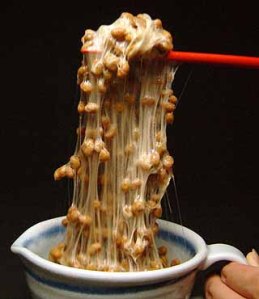 did, and the sushi chef rolled his eyes and nodded. A minute later a bowl of natto with a raw egg on it arrived. “What is natto?” I asked. Miki said, “Soybeans. Make sure you mix the egg into it.” Yummmm. The gooey stringiness of it should have been a red flag. It smelled like a bad cheese and had the consistency of Elmer’s Glue. I gagged on it as it coated my tongue, gums, teeth, uvula, and larynx. It didn’t help when Miki told me how natto was made. Basically, you soak soybeans in water for 24 hours, and then layer them between sheets of rice straw and leave them in the sun until they rot. He asked me how I liked my natto. “Not bad,” I lied. That was tatemae. He said, “My mother always made me eat that for breakfast. I hated it. How can you eat that? We don’t even like that in Japan!” That…was honne.
did, and the sushi chef rolled his eyes and nodded. A minute later a bowl of natto with a raw egg on it arrived. “What is natto?” I asked. Miki said, “Soybeans. Make sure you mix the egg into it.” Yummmm. The gooey stringiness of it should have been a red flag. It smelled like a bad cheese and had the consistency of Elmer’s Glue. I gagged on it as it coated my tongue, gums, teeth, uvula, and larynx. It didn’t help when Miki told me how natto was made. Basically, you soak soybeans in water for 24 hours, and then layer them between sheets of rice straw and leave them in the sun until they rot. He asked me how I liked my natto. “Not bad,” I lied. That was tatemae. He said, “My mother always made me eat that for breakfast. I hated it. How can you eat that? We don’t even like that in Japan!” That…was honne.
Our honne relationship grew over the next few months. He was worried about his daughters. They were becoming very Americanized. This would not help them when the family moved back to Hiroshima. Miki had to hire tutors to keep his girls’ Japanese language skills current with girls their ages. He knew that his promotion back to Toyo Kogyo would take a toll on his family. They had lived in Southern California for almost six years. His daughters had been three and five when they arrived. They had already told their father that they didn’t want to move back. Miki got the news that he was being transferred back in December of 1978. He was leaving shortly after January 1. My wife and I had our first child on December 20, 1978. A baby boy. Miki congratulated me on his birth. We went to lunch one last time. As he was leaving our offices, he turned and vigorously shook my hand, protocol prohibiting a hug. We didn’t speak. As he left, he looked back and said, “Tom, I have something for you. I left it with Mary, my secretary.” I said my thanks and said I would pick it up. Several days later, I went to Miki’s now empty office. Mary handed me a crumpled brown shopping bag. In it was a present wrapped in expensive white paper, tied up with a white satin ribbon. That evening, my wife and I opened it. We noticed that the paper was worn and the ribbon a little frayed. Inside was a beautiful silk carp kite. “What a nice gift,” we thought. A few weeks later, in my Japanese class, I mentioned the gift to my sensei. I told her about the wrapping. She asked the color. “White.” She asked if the present seemed “old.” I said yes. Her face saddened. She asked, “He gave this to you for the birth of your son?” Again, I said yes. She said, “And your friend Miki has no sons? Do you know the meaning of what he has given you?” Uh-oh. She explained to me that a traditional wedding gift for a young couple is a carp kite, wrapped in white and presented by the bride’s parents as a good luck gesture. It is only to be opened upon the birth of their first son, and then flown over the house on May 5th of each year…Boy’s Day (now Children’s Day). It tells everyone that you have a son. Miki and his wife had given us this incredible gift, knowing that they would never be able to use the carp kite. How selfless!!! That night, I wrote Miki a letter. “Sato-san – my wife and I wish to thank you for your wonderful gift upon the birth of our son. We want you to know that your Koinobori no Sato will fly proudly above our house this coming Tango no Sekku.” And it did. And that’s honne!
paper, tied up with a white satin ribbon. That evening, my wife and I opened it. We noticed that the paper was worn and the ribbon a little frayed. Inside was a beautiful silk carp kite. “What a nice gift,” we thought. A few weeks later, in my Japanese class, I mentioned the gift to my sensei. I told her about the wrapping. She asked the color. “White.” She asked if the present seemed “old.” I said yes. Her face saddened. She asked, “He gave this to you for the birth of your son?” Again, I said yes. She said, “And your friend Miki has no sons? Do you know the meaning of what he has given you?” Uh-oh. She explained to me that a traditional wedding gift for a young couple is a carp kite, wrapped in white and presented by the bride’s parents as a good luck gesture. It is only to be opened upon the birth of their first son, and then flown over the house on May 5th of each year…Boy’s Day (now Children’s Day). It tells everyone that you have a son. Miki and his wife had given us this incredible gift, knowing that they would never be able to use the carp kite. How selfless!!! That night, I wrote Miki a letter. “Sato-san – my wife and I wish to thank you for your wonderful gift upon the birth of our son. We want you to know that your Koinobori no Sato will fly proudly above our house this coming Tango no Sekku.” And it did. And that’s honne!
Next: Fast Times At FCB High

